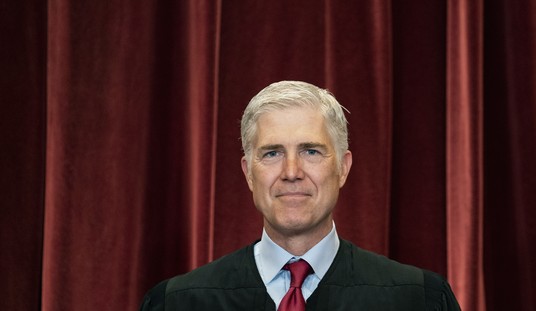I’m Don Draper, and I approve this message:
http://www.youtube.com/watch?v=myaqD_NfKoQ
Postwar optimism, you’re soaking in it, baby.
Seriously though, I don’t get early 1960s automotive styling. I love the cars of the 1950s, with their tailfins and seafoam green paint and the major role they played in shaping the Hog Stomping Baroque period of American optimism, as Tom Wolfe would say. And I love the cars of the mid to late ‘60s, whether it’s the 1966 Cadillac Coupe de Ville or the great muscle cars of the era. But in order to get to the Mustang, Ford had to first pass through…the Falcon. And looking at this clip, and the early 1960s car ads in Taschen’s All-American Advertising book is a reminder that American advertisers labored long and hard and spent small fortunes to produce beautiful images to sell what were often really crappy cars.
Of course, flash-forward a quarter-century into the future from that 1960 Ford ad, and you’ll see reminders that that’s always been true:
(I wonder how much the would-be Sonny Crocketts of that period actually enjoyed jumping into their 1987 Pontiac Sunbird convertibles?)
But what happened to American cars in the early 1960s? Could somebody explain Detroit’s aesthetic thinking back then? It’s not based on a lack of cultural confidence, which helped to doom American cars in the 1970s. From the 1950s to the death of JFK, Americans sailed from the comfort of Ike in the White House to the brave new world of Kennedy’s New Frontier without missing a beat.
Of course, these days, as P.J. O’Rourke wrote in 2009, virtually all of the glamour has been drained from the automobile by the nannies who would ultimately make GM and Chrysler (not Ford though, at least not yet) wards of the state:
We’ve lost our love for cars and forgotten our debt to them and meanwhile the pointy-headed busybodies have been exacting their revenge. We escaped the poke of their noses once, when we lived downtown, but we won’t be able to peel out so fast the next time. In the name of safety, emissions control and fuel economy, the simple mechanical elegance of the automobile has been rendered ponderous, cumbersome and incomprehensible. One might as well pry the back off an iPod as pop the hood on a contemporary motor vehicle. An aging shade-tree mechanic like myself stares aghast and sits back down in the shade. Or would if the car weren’t squawking at me like a rehearsal for divorce. You left the key in. You left the door open. You left the lights on. You left your dirty socks in the middle of the bedroom floor.
I don’t believe the pointy-heads give a damn about climate change or gas mileage, much less about whether I survive a head-on with one of their tax-sucking mass-transit projects. All they want to is to make me hate my car. How proud and handsome would Bucephalas look, or Traveler or Rachel Alexandra, with seat and shoulder belts, air bags, 5-mph bumpers and a maze of pollution-control equipment under the tail?
And there’s the end of the American automobile industry. When it comes to dull, practical, ugly things that bore and annoy me, Japanese things cost less and the cup holders are more conveniently located.
The American automobile is—that is, was—never a product of Japanese-style industrialism. America’s steel, coal, beer, beaver pelts and PCs may have come from our business plutocracy, but American cars have been manufactured mostly by romantic fools. David Buick, Ransom E. Olds, Louis Chevrolet, Robert and Louis Hupp of the Hupmobile, the Dodge brothers, the Studebaker brothers, the Packard brothers, the Duesenberg brothers, Charles W. Nash, E. L. Cord, John North Willys, Preston Tucker and William H. Murphy, whose Cadillac cars were designed by the young Henry Ford, all went broke making cars. The man who founded General Motors in 1908, William Crapo (really) Durant, went broke twice. Henry Ford, of course, did not go broke, nor was he a romantic, but judging by his opinions he certainly was a fool.
America’s romantic foolishness with cars is finished, however, or nearly so. In the far boondocks a few good old boys haven’t got the memo and still tear up the back roads. Doubtless the Obama administration’s Department of Transportation is even now calculating a way to tap federal stimulus funds for mandatory OnStar installations to locate and subdue these reprobates.
And yes, that 1960 Ford ad can be seen from today’s perspective as high camp, beginning with the giant Freudian phallic telescope that expands into the very first scene and sits looming in the background of virtually every shot afterward. The grass is Astroturf, the sky is a painted cyclorama, and that Ford Falcon was the nadir of pre-seventies automotive design. But I’d give anything to put on a tux, jump in Doc Brown’s DeLorean and visit that set for a few hours.
As long as I can hop into my 1985 Mercedes 500SEL afterwards.
Related: Ford’s 2011 advertising employs a very different, if no less effective tone: “Video: Ford’s Honest, Brutal Anti-Bailout Commercial.”









Join the conversation as a VIP Member